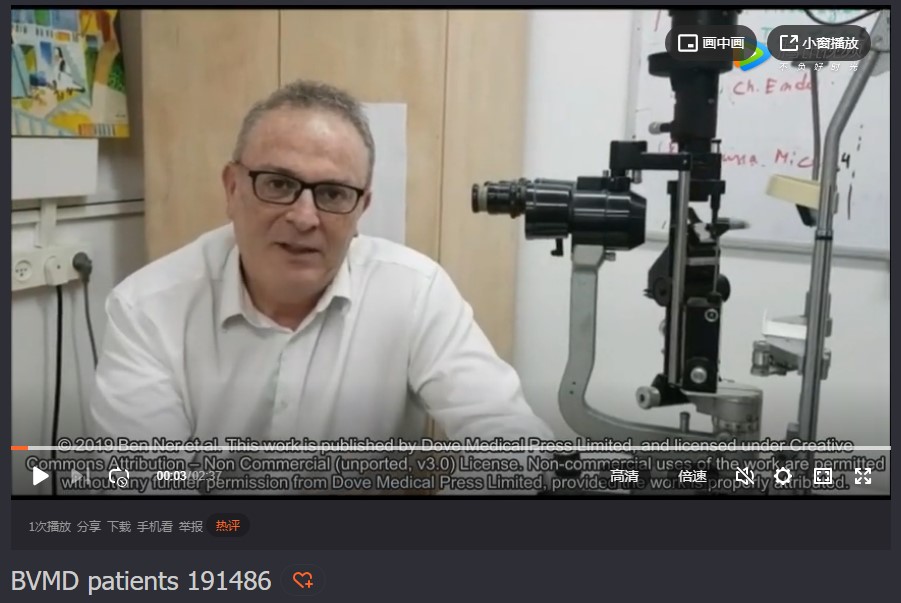9 0 8 0 2
论文已发表
注册即可获取德孚的最新动态
IF 收录期刊
- 2.6 Breast Cancer (Dove Med Press)
- 3.9 Clin Epidemiol
- 3.3 Cancer Manag Res
- 3.9 Infect Drug Resist
- 3.6 Clin Interv Aging
- 4.8 Drug Des Dev Ther
- 2.8 Int J Chronic Obstr
- 8.0 Int J Nanomed
- 2.3 Int J Women's Health
- 3.2 Neuropsych Dis Treat
- 4.0 OncoTargets Ther
- 2.2 Patient Prefer Adher
- 2.8 Ther Clin Risk Manag
- 2.7 J Pain Res
- 3.3 Diabet Metab Synd Ob
- 4.3 Psychol Res Behav Ma
- 3.4 Nat Sci Sleep
- 1.9 Pharmgenomics Pers Med
- 3.5 Risk Manag Healthc Policy
- 4.5 J Inflamm Res
- 2.3 Int J Gen Med
- 4.1 J Hepatocell Carcinoma
- 3.2 J Asthma Allergy
- 2.3 Clin Cosmet Investig Dermatol
- 3.3 J Multidiscip Healthc

Chromatic pupilloperimetry for objective diagnosis of Best vitelliform macular dystrophy
Authors Ben Ner D, Sher I, Hamburg A, Mhajna MO, Chibel R, Derazne E, Sharvit-Ginon I, Pras E, Newman H, Levy J, Khateb S, Sharon D, Rotenstreich Y
Received 23 October 2018
Accepted for publication 9 January 2019
Published 5 March 2019 Volume 2019:13 Pages 465—475
DOI https://doi.org/10.2147/OPTH.S191486
Checked for plagiarism Yes
Review by Single-blind
Peer reviewers approved by Dr Justinn Cochran
Peer reviewer comments 2
Editor who approved publication: Dr Scott Fraser
Purpose: To determine the pupil response of Best
vitelliform macular dystrophy (BVMD) patients for focal blue and red light
stimuli presented at 76 test points in a 16.2° visual field (VF) using a
chromatic pupilloperimeter.
Methods: An
observational study was conducted in 16 participants: 7 BVMD patients with a
heterozygous BEST1 mutation and 9 similar-aged controls. All participants were
tested for best-corrected visual acuity, chromatic pupilloperimetry and
Humphrey perimetry. Percentage of pupil contraction (PPC), maximal pupil
contraction velocity (MCV) and latency of MCV (LMCV) were determined.
Results: The
mean PPC and MCV recorded in BVMD patients in response to red stimuli were
lower by >2 standard errors (SEs) from the mean of controls in 47% and 43%
of VF test points, respectively. The mean PPC and MCV recorded in the patients
in response to blue stimuli were lower by >2 SEs from the mean of controls
in 36% and 24% of VF test points, respectively. The patients’ mean and median
MCV recorded in response to red light correlated with their Humphrey mean
deviation score (r =−0.714, P =0.071 and r =−0.821, P =0.023, respectively) and visual acuity (r =0.709, P =0.074 and r =0.655, P =0.111,
respectively). A substantially shorter mean LMCV was recorded in BVMD patients
compared to controls in 54% and 93% of VF test points in response to red and
blue light, respectively. Receiver operating characteristic analysis for LMCV
in response to red light identified a test point at the center of the VF with
high diagnostic accuracy (area under the curve of 0.94).
Conclusion: Chromatic
pupilloperimetry may potentially be used for objective noninvasive assessment
of rod and cone cell function in different locations of the retina in BVMD
patients.
Keywords: Best
vitelliform macular dystrophy, pupillary light reflex, perimetry,
pupilloperimetry, visual field
摘要视频链接:BVMD patients
